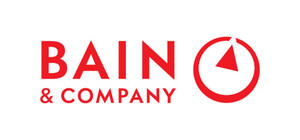Global luxury spending to land near €1.5 trillion in 2024, remaining relatively flat as consumers prioritize experiences over products amid uncertainty
- Pockets of luxury growth center around experiences, including hospitality and dining, and experiential goods geared toward high-net-worth individuals
- Personal luxury goods market seeing its first slowdown since the Great Recession, excluding Covid, as consumers cut back on discretionary items
- Luxury customer base shrinking amid continuing economic uncertainty, price elevation, and declining customer advocacy, particularly among younger generations
MILAN, Nov. 13, 2024 /PRNewswire/ -- Global luxury spending is expected to reach nearly €1.5 trillion in 2024, remaining relatively flat compared to 2023, with an estimated growth rate between -1 and 1% year over year. This is according to the latest luxury report from Bain & Company, in partnership with Altagamma, the Italian luxury goods manufacturers' industry association.
Personal luxury goods market slows slightly amid uncertainty and price elevation
Global luxury consumers, grappling with macroeconomic uncertainty and continued price elevation among brands, are cutting back on discretionary items. As a result, Bain expects the personal luxury goods market to see its first slowdown since the Great Recession, excluding Covid, experiencing -2% erosion, at current exchange rates, compared to last year. This trend—particularly acute among Generation Z, whose advocacy for luxury brands continues to decline—has led to a shrinking luxury customer base by a magnitude of about 50 million over the last two years. Meanwhile, top customers continue to grow their share of luxury consumption, although they are progressively losing the feeling of exclusivity from brands.
"Luxury spending has shown remarkable stability this year, despite macroeconomic uncertainty, largely driven by consumers' appetite for luxury experiences," said Claudia D'Arpizio, Bain & Company partner and leader of the firm's global Fashion & Luxury practice, the lead author of the study. "And yet, 50 million luxury consumers have either opted out of the luxury goods market or been forced out of it in the last two years. This is a signal for brands that it's time to readjust their value propositions. To win back customers, particularly the younger ones, brands will need to lead with creativity and expand conversation topics. Simultaneously, they must keep their top customers front and center, surprising and delighting them while rediscovering one-to-one human interactions. For all customers, it will be critical to double down on personalization, leveraging technology to achieve it at scale."
Pockets of strong growth in luxury experiences and experiential goods
Luxury experiences continue to maintain traction as consumers shift spend toward travel experiences and social events, favoring personal treatment and wellness over tangible goods. Simultaneously, experiential goods, especially those geared toward high-net-worth individuals, such as yachts, cars, and jets, are garnering strong interest.
Beauty and eyewear outshine as consumers seek small indulgences
Beauty products, particularly fragrances, continue to perform well as consumers gravitate toward "small indulgences." Eyewear is also experiencing positive momentum, with consumers drawn to widening brand creativity and high-end specialist brands.
Jewelry is holding strong, especially favored by the high-jewelry segment and by a remarkably positive performance within the US market. Meanwhile, watches, leather goods, and shoes have seen a slowdown as consumers downtrade and are increasingly selective about purchases, though small leather accessories and entry-items are still of interest for Generation Z.
As consumers seek value purchases, the secondhand market is gaining traction, with strong momentum on jewelry and heritage apparel and leather pieces.
Distribution trends: Outlets winning over full-price stores
As most brick-and-mortar luxury stores are suffering from plummeting walk-in traffic, the outlet channel is overperforming, driven by consumers' quest for value purchases. The channel is gaining popularity as a preferred entry channel into the market, with consumers downtrading from full-price environments. Meanwhile, online is entering a normalization trajectory following post-pandemic swings. In a context where consumers are increasingly seeking immersive, personalized, and brand-curated experiences, winning brands will drive traffic back to stores by delivering differentiated value propositions and broadening in-store engagement.
Regional breakdown: Bright spots in the Americas, Japan, and Europe
- Americas: The US is showing green shoots with an upward quarterly trajectory, despite fluctuating consumer confidence and foot traffic slowing across key cities. Outside of the US, performance is more polarized. Canada continues to struggle with a lack of Chinese tourists while Mexico and Brazil see positive notes.
- APAC: Japan continues to lead globally on luxury growth due to favorable currency rates and associated surges in touristic spending throughout the first half of 2024. Momentum, however, has recently slowed as pricing realigned. In contrast, Mainland China has experienced a sharp slowdown, worsening throughout the year as domestic spending decreased due to lackluster consumer confidence and Chinese touristic outflows to nearby areas and Europe.
- EMEA: Europe is showing stronger yet normalizing growth over quarters, with demand sustained by touristic inflows, particularly in tier-one cities and resort locations in southern Europe. The UK and northern Europe are seeing more limited luxury tourist inflows. The picture varies across the Middle East as regional tensions impact touristic inflows.
Emerging markets represent new potential avenues of growth—including in Latin America, India, Southeast Asia, and Africa—which are collectively expected to add more than 50 million upper-middle class luxury consumers by 2030.
Looking beyond 2024
The luxury market is expected to face a slightly improving context throughout 2025, though this is highly dependent on the unfolding macroeconomic scenarios in key regions. Looking toward 2030, the market will likely embark on a long-term positive trajectory, with an increasingly addressable consumer base.
"To secure future growth, brands will need to rethink their luxury equations, re-establishing creativity and blending old and new playbooks," said Federica Levato, partner at Bain & Company and leader of the firm's EMEA Fashion & Luxury practice, co-author of today's report. "This includes rediscovering their essence and embracing the foundational pillars of the industry: desirability fueled by craftsmanship, creativity, and distinctive brand values; meaningful, personalized, and culturally-resonant customer connections and experiences; and tech-enabled flawless execution, with Artificial Intelligence to play a paramount role across most areas of the value proposition."
Editor's Note: For questions or to schedule an interview, please contact Orsola Randi (Milan) at [email protected] or +39 339 327 3672, or Katie Ware (New York) at [email protected] or +1 646 562 8107.
About Bain & Company
Bain & Company is a global consultancy that collaborates with clients worldwide to define and drive transformative outcomes. Founded in 1973 and recognized for high standards of client advocacy, Bain operates across 65 cities in 40 countries. The firm's commitment to social impact includes a pledge to invest over $1 billion in pro bono services over the next decade
SOURCE Bain & Company

WANT YOUR COMPANY'S NEWS FEATURED ON PRNEWSWIRE.COM?
Newsrooms &
Influencers
Digital Media
Outlets
Journalists
Opted In





Share this article